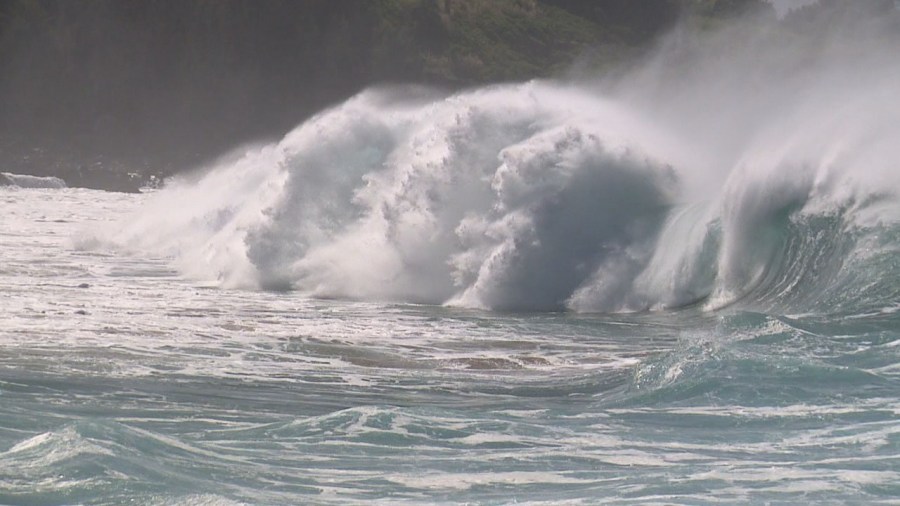HONOLULU (KHON2) — Waves can shape Hawaiʻi’s coastlines and culture; but when they grow too large, they can also threaten lives and property.
During the winter and summer swell seasons, the National Weather Service in Honolulu issues alerts that help residents and visitors stay safe near the ocean.
Understanding what these warnings mean and what to do when they’re issued can make a real difference.
What they are
A High Surf Advisory means waves are strong enough to threaten life and property within the surf zone, but the danger is moderate.
A High Surf Warning signals that conditions are expected to bring an especially high risk to people, property and coastlines.
Both alerts come from the National Weather Service Forecast Office in Honolulu, which monitors ocean and weather conditions for the entire state.
Criteria and thresholds for Hawaiʻi
The National Weather Service uses different height thresholds for each shoreline direction because Hawaiʻi’s coasts face different swell sources throughout the year.
Wave heights refer to expected breaker heights which are the waves that actually reach the shore. This table helps with clarifying the information:
| Shoreline orientation | Advisory criteria | Warning criteria |
|---|---|---|
| North-facing shores | about 15 feet | about 25 feet |
| West-facing shores (Big Island) | about 8 feet | about 12 feet |
| West-facing shores (other islands) | about 12 feet | about 20 feet |
| South-facing shores | about 10 feet | about 15 feet |
| East-facing shores | about 10 feet | about 15 feet |
These numbers guide when advisories or warnings are issued.
What the risks are
During a high surf event, breaking waves and strong currents can make swimming or wading dangerous.
Shore-break waves can slam beachgoers onto the sand or reefs that can lead to serious injuries. Large surf may also cause coastal flooding, erosion and splash-over on roads and beaches, especially when combined with high tides.
How to stay safe
Check the National Weather Service Honolulu site for current watches, warnings and advisories.
If a High Surf Advisory or Warning is in effect, stay well back from the surf zone and avoid entering the water.
Follow lifeguard directions and posted warnings. Even skilled swimmers can be caught off guard.
Expect north and west facing shores to see larger winter swells, while south facing shores experience more surf in summer.
In low-lying coastal areas, watch for flooding or splash-over during high tide events.
Click here for the NWS high surf advisory/warning information and here for their page of current warnings/advisories. You can also click here for the National Oceanic and Atmospheric Administration’s page.
Staying aware, keeping a safe distance and respecting the ocean are the best ways to stay protected when surf heights rise across Hawaiʻi.
